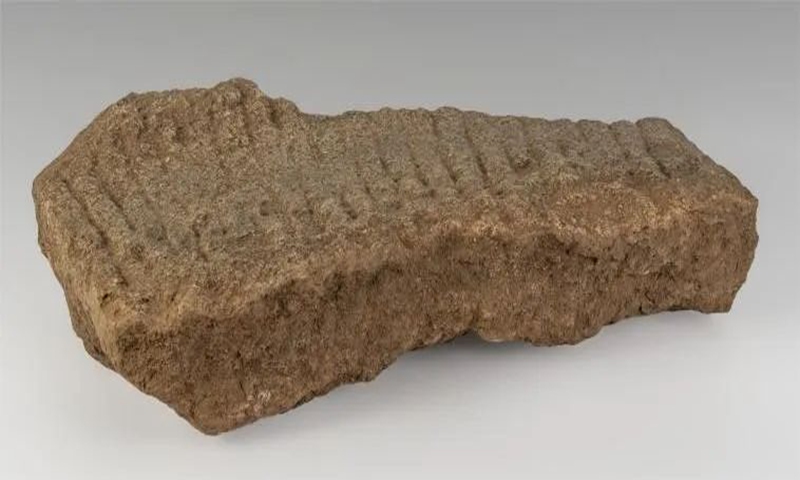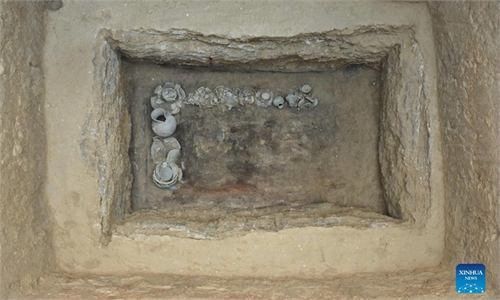ARTS / CULTURE & LEISURE
Archaeological discovery reveals centuries-old Jurchen heritage in NE China

A stone tool unearthed from the site in Changchun Photo: Wenbozhongguo official WeChat
Archaeologists have identified a site discovered in Changchun, Northeast China's Jilin Province, as once belonging to the Jurchen people, the predecessors of the Manchu ethnic group. The site marks the first-ever discovery of a Ming Dynasty (1368-1644) Jurchen site in the Changchun area, Zhang Liyan,a professor at Northeast Normal University's School of History and Culture, who participated in the excavation, told the Global Times on Monday.
Located near a highway in Xihu Village, the site covers an excavation area of 200 square meters and is comprised of four layers. The excavation, conducted by researchers from the Jilin Provincial Institute of Cultural Relics and Archaeology in collaboration with the archaeology department of Northeast Normal University's School of History and Culture, took place during July and August 2022.
More than 60 artifacts were unearthed, including pottery, porcelain, stoneware, iron tools, and copper coins, along with large number of pottery fragments. Analysis has recently confirmed that the site dates back approximately to the late Yuan Dynasty (1279-1368) to the early Ming Dynasty (1368-1644).
According to historical records, various Jurchen tribes residing in the middle and upper reaches of the Songhua River migrated southward during the periods.
This site not only enriches the archaeological record of Ming Dynasty Jurchen culture in the province but also provides valuable clues and evidence for the historical accounts of the southward migration of the Jurchen people during the late Yuan and early Ming periods, Zhang said.
Zhang noted that among the unearthed artifacts, pottery is the most abundant, with clay red pottery being the predominant type. The pottery was fired at a relatively low temperature, resulting in uneven coloring.
The handcrafted pottery exhibits irregular shapes and severe cracks, with many shards splitting down the middle. This reflects the relatively primitive state of pottery-making technology among the Jurchen people who migrated south during the late Yuan and early Ming dynasties, she added.
Additionally, the site yielded previously unseen types of stone tools such as pestles, mortars, and millstones for processing millet and grain.
Combining these findings with soil and plant samples from the site, Zhang suggested that the residents of the site were engaged in agricultural activities, primarily focused on millet and panicum crops. The stone tools likely served to process these staple grains.

